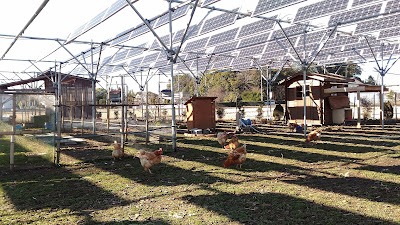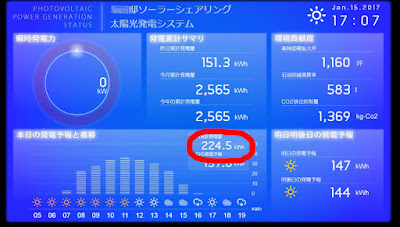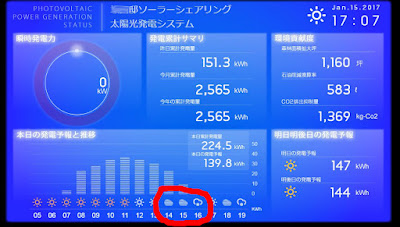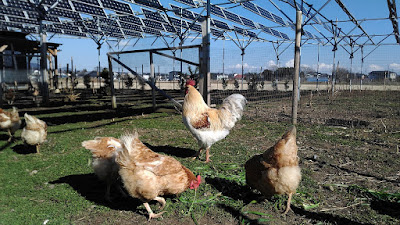1. power generation (solar panels) and 2. food production (free range chickens).
But for the past year, almost all posts on this blog were about chickens - the food production part. Apparently chickens are more interesting to write about because they move and fly and sing and do all the funny things that a bunch of cute mini-dinosaurs should do. The well of chicken topics will never be exhausted.
 |
| Birds survived dinosaur extinction because of their fluffy bottoms. |
Solar panels don't fly or sing so they easily get overlooked, but in economic terms they are essential because they financially support the whole farm. And (sadly) economic terms matter. Because revenue from electricity sales subsidizes our chicken business, it's safe to say that without panels, there would be no chickens at all.
(For the chicken business to be self-sustaining [= able to pay the labor costs], we would either have to increase the number of chickens fivefold, or increase the price of an egg five times. The first option would produce many unhappy overcrowded chickens. The second would produce outrageously expensive, unsellable eggs. If there is a third way other than subsidizing, we haven't discovered it yet.)
All this means that panels deserve some attention too! Especially as this blog has "solar sharing" in its title. So here's a yesterday screenshot of Solar monitor, the online monitoring service that we use to check our farm's power generation status.
 |
| Power generation status on Jan. 15, 2017, 10:44 am. |
Solar monitor is not cheap (3250 jpy monthy fee) but it is quite useful. Frequent checking of the generation status helped us notice suspiciously low performance more than a year ago which led to the "discovery" that 10% of panels were malfunctioning. (Now fixed.)
Despite Solar monitor's importance I only mentioned it once on this blog, and that was already two years ago.
Despite Solar monitor's importance I only mentioned it once on this blog, and that was already two years ago.
Yesterday was a perfect weather day for solar power - sunny, cold and windy. Icy wind does not make the day too pleasant for humans, but solar panels are happy - the wind cools the panel surface and performance goes up. Thanks to these conditions we recorded the best daily performance in more than a year: 224.5 kWh of electricity/day.
What's funny is that Solar monitor also makes performance predictions for the next and the next-next day, based on the weather information, but yesterday, the prediction went amusingly wrong.
We were supposed to have clouds and even snow in the afternoon ...
... but a picture taken at the farm just at that supposedly cloudy-snowy time, was this:
 |
| Jan. 15, 2017, cca 3:30 pm |
Well, I was not disappointed. We'll happily wait for the snow until next winter :D













